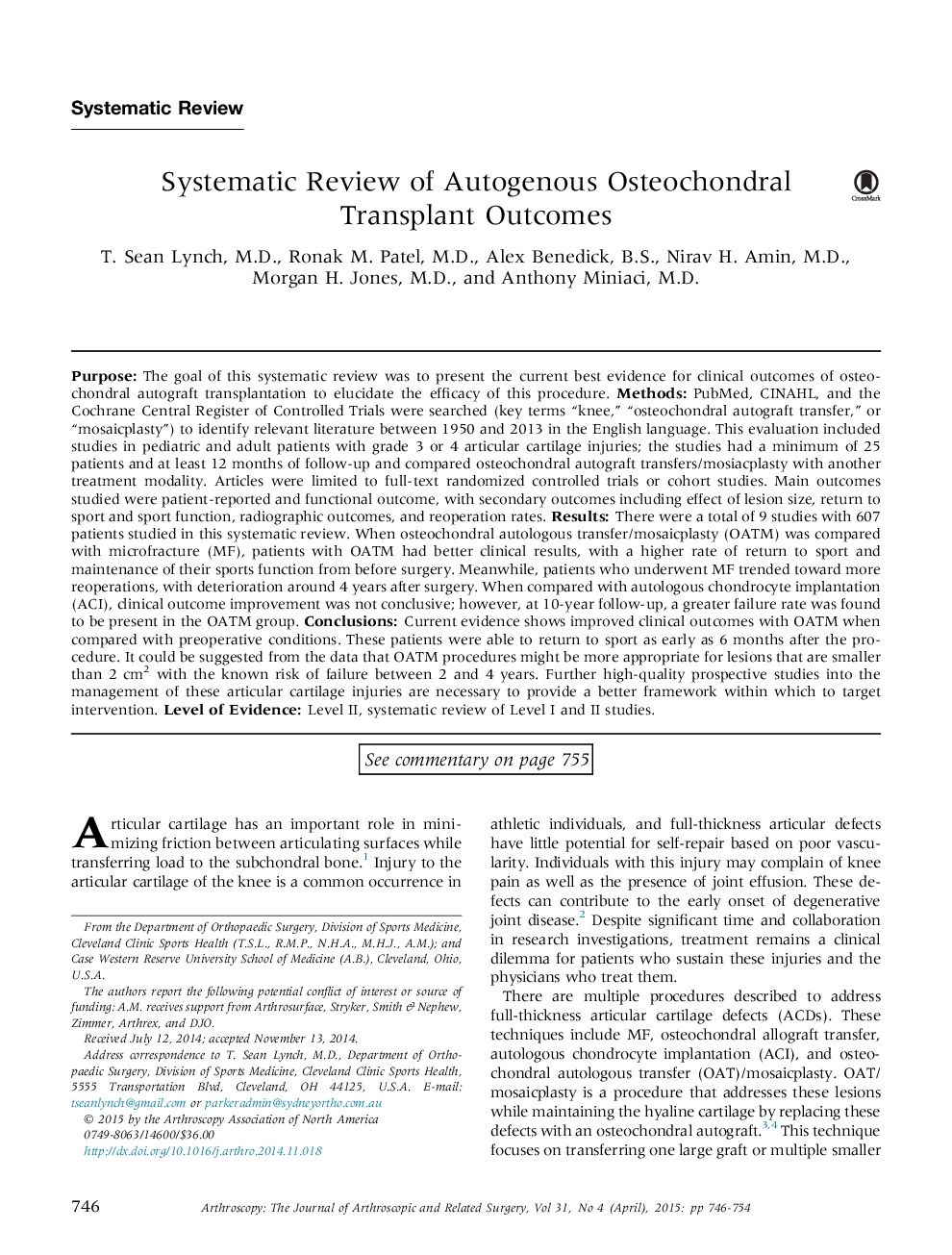| کد مقاله | کد نشریه | سال انتشار | مقاله انگلیسی | نسخه تمام متن |
|---|---|---|---|---|
| 4042689 | 1603485 | 2015 | 9 صفحه PDF | دانلود رایگان |
PurposeThe goal of this systematic review was to present the current best evidence for clinical outcomes of osteochondral autograft transplantation to elucidate the efficacy of this procedure.MethodsPubMed, CINAHL, and the Cochrane Central Register of Controlled Trials were searched (key terms “knee,” “osteochondral autograft transfer,” or “mosaicplasty”) to identify relevant literature between 1950 and 2013 in the English language. This evaluation included studies in pediatric and adult patients with grade 3 or 4 articular cartilage injuries; the studies had a minimum of 25 patients and at least 12 months of follow-up and compared osteochondral autograft transfers/mosiacplasty with another treatment modality. Articles were limited to full-text randomized controlled trials or cohort studies. Main outcomes studied were patient-reported and functional outcome, with secondary outcomes including effect of lesion size, return to sport and sport function, radiographic outcomes, and reoperation rates.ResultsThere were a total of 9 studies with 607 patients studied in this systematic review. When osteochondral autologous transfer/mosaicplasty (OATM) was compared with microfracture (MF), patients with OATM had better clinical results, with a higher rate of return to sport and maintenance of their sports function from before surgery. Meanwhile, patients who underwent MF trended toward more reoperations, with deterioration around 4 years after surgery. When compared with autologous chondrocyte implantation (ACI), clinical outcome improvement was not conclusive; however, at 10-year follow-up, a greater failure rate was found to be present in the OATM group.ConclusionsCurrent evidence shows improved clinical outcomes with OATM when compared with preoperative conditions. These patients were able to return to sport as early as 6 months after the procedure. It could be suggested from the data that OATM procedures might be more appropriate for lesions that are smaller than 2 cm2 with the known risk of failure between 2 and 4 years. Further high-quality prospective studies into the management of these articular cartilage injuries are necessary to provide a better framework within which to target intervention.Level of EvidenceLevel II, systematic review of Level I and II studies.
Journal: Arthroscopy: The Journal of Arthroscopic & Related Surgery - Volume 31, Issue 4, April 2015, Pages 746–754
